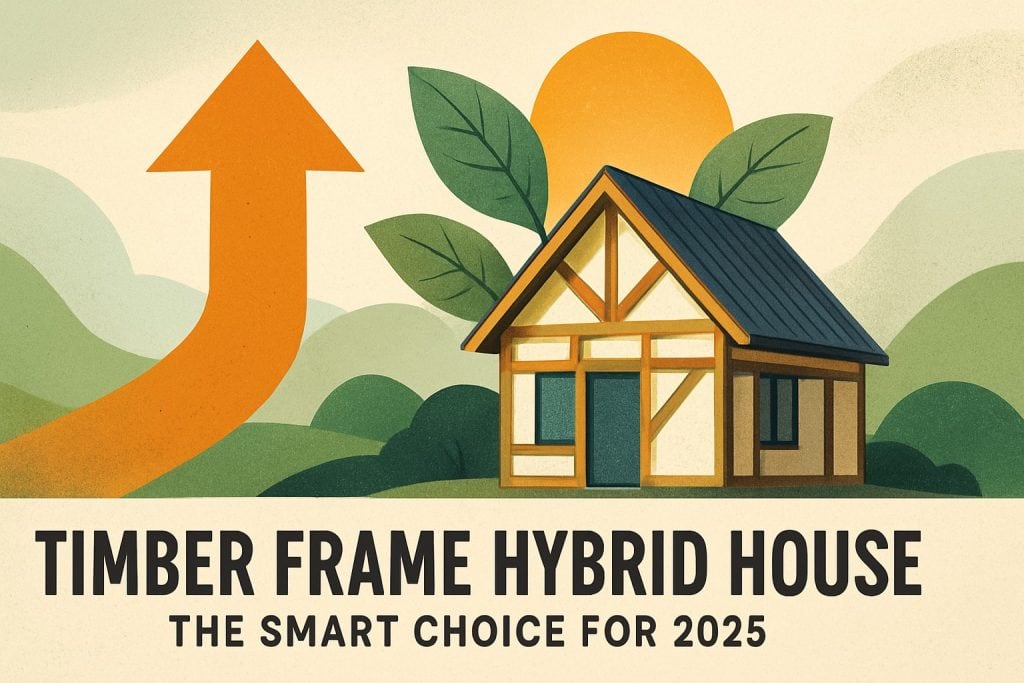With eco-conscious living on the rise and energy bills climbing, the timber frame hybrid house stands out as the smart choice for 2025. More homeowners across the UK are turning to this innovative approach, blending traditional craftsmanship with cutting-edge materials for homes that are both sustainable and future-proof.
This guide unpacks everything you need to know about building a timber frame hybrid house. Discover how these homes combine energy efficiency, design flexibility, and rapid construction, making them ideal for modern living.
Ready to plan, design, and build your own timber frame hybrid house? Dive in and take the first step toward a smarter, more sustainable home.
Understanding Timber Frame Hybrid Houses
Timber frame hybrid houses are fast becoming a symbol of smart, sustainable living in the UK. Their unique approach combines the best of traditional timber craftsmanship with modern building materials and techniques. But what truly sets a timber frame hybrid house apart from other construction methods, and why are so many self-builders turning to this innovative solution?
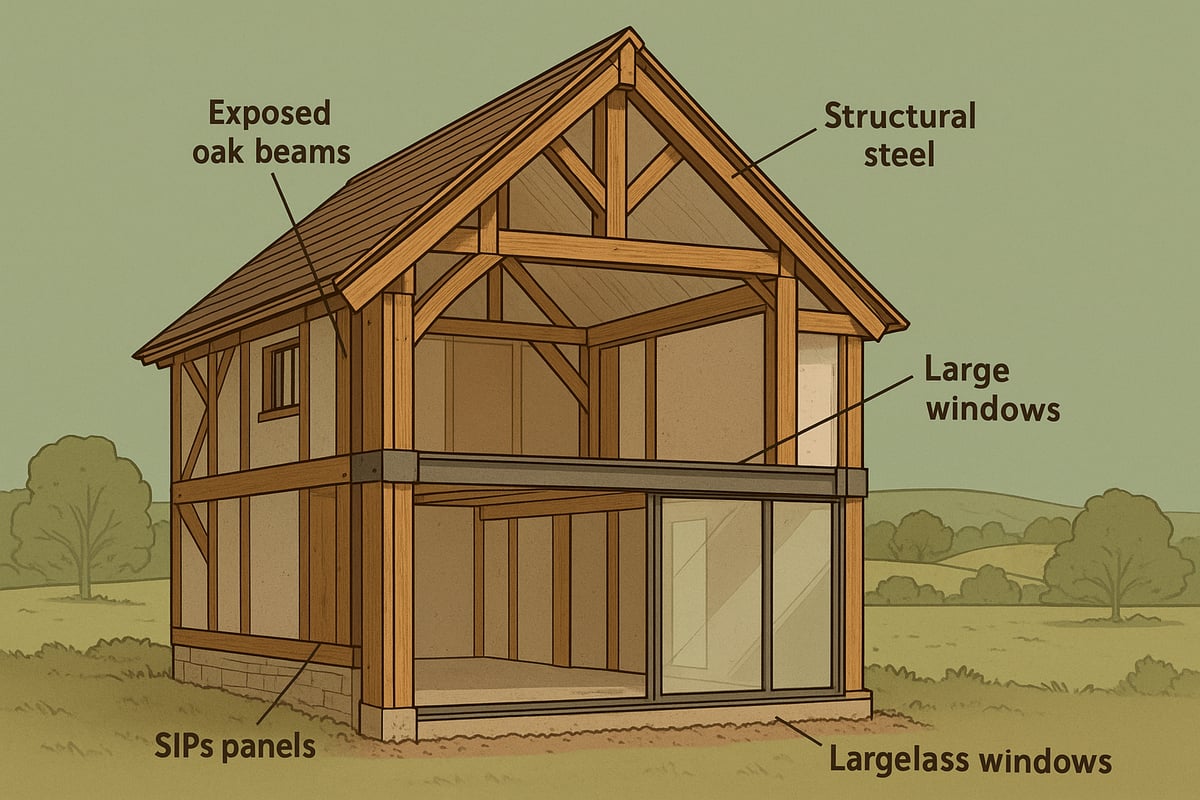
Defining Timber Frame Hybrid Construction
A timber frame hybrid house blends a traditional structural timber skeleton with other building systems and materials. Unlike a pure timber frame—where posts and beams provide all the support—hybrid designs incorporate materials such as steel, structural insulated panels (SIPs), glass, and masonry. This fusion allows architects and builders to achieve complex forms, larger open spaces, and improved energy performance.
In the UK, common materials for hybrid homes include oak or Douglas fir for the main frame, complemented by SIPs for walls and roofs, steel flitch plates for reinforcement, and masonry for feature walls or foundations. For example, a barn-inspired timber frame hybrid house might showcase exposed oak trusses in the living area, SIPs for high insulation in bedrooms, and a striking glass façade overlooking the garden.
Hybrid construction is different from full SIPs or masonry builds. While those rely entirely on one material for structure and envelope, a timber frame hybrid house uses each material where it works best, balancing beauty, strength, and efficiency. For more insight into the methods and benefits of timber construction, see Timber Build Insights.
Key Advantages of Hybrid Timber Frame Homes
Opting for a timber frame hybrid house offers a suite of advantages that appeal to forward-thinking homeowners and environmentally conscious self-builders alike.
Energy Efficiency: Hybrid homes can achieve impressive thermal performance, with SIPs and high-spec glazing delivering low U-values and airtightness. This translates into energy savings of 20 to 40 percent compared to conventional builds.
Design Flexibility: Combining timber with steel and glass enables ambitious architectural features—vaulted ceilings, open-plan layouts, and floor-to-ceiling windows are all possible. The hybrid approach adapts to contemporary, barn-style, or cottage aesthetics.
Speed of Construction: Prefabricated timber elements and modular SIPs mean a timber frame hybrid house can be erected up to 30 percent faster than traditional masonry homes. This reduces disruption on site and accelerates move-in dates.
Sustainability: Timber is a renewable resource that locks away carbon, while SIPs and modern insulation reduce operational emissions. Many hybrid builds use responsibly sourced wood and recycled materials.
Durability: Hybrid structures are designed for longevity, with the combination of engineered wood, treated timber, and robust steel connections ensuring resilience against the UK climate.
| Feature | Timber Frame Hybrid | Traditional Masonry | Full SIPs Build |
|---|---|---|---|
| Speed of Build | Fast | Slow | Fast |
| Energy Efficiency | High | Moderate | High |
| Design Flexibility | Very High | Moderate | Moderate |
| Sustainability | Excellent | Variable | Good |
| Longevity | High | High | High |
Common Myths and Misconceptions
Despite the growing popularity of the timber frame hybrid house, several misconceptions persist.
Myth 1: Hybrids are more expensive. While upfront costs can be slightly higher, lifecycle savings from energy efficiency and reduced maintenance often result in lower overall expenditure. Typical UK self-build figures suggest £1,800–£2,500 per square metre, which is competitive for high-performance homes.
Myth 2: Timber structures are high-maintenance. Modern treatments and detailing protect timber from weather and pests, meaning maintenance is comparable to brick or block homes.
Myth 3: Planning permission is a hurdle. Most local authorities welcome sustainable builds. With the right design team, planning and building regulations—like Part L for energy standards—are met with ease.
Real-life case studies reveal that hybrid homes not only meet but often exceed performance and aesthetic expectations. Homeowners report excellent comfort, low running costs, and strong resale values, cementing the timber frame hybrid house as a future-proof choice.
Planning Your Timber Frame Hybrid House Project
Embarking on a timber frame hybrid house journey begins long before any foundations are poured. The planning phase is critical, setting the trajectory for every decision and outcome. With careful preparation, you can ensure your project is future-proof, cost-effective, and tailored to your ambitions.
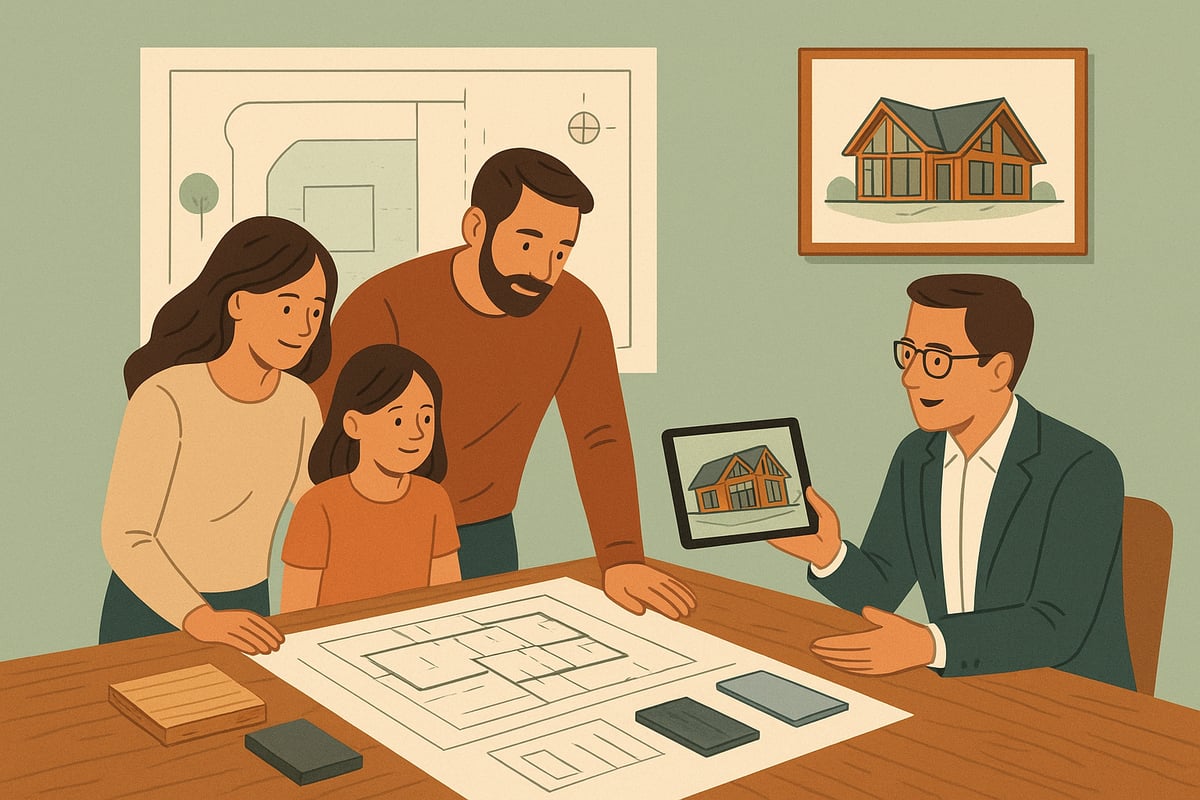
Setting Your Vision and Budget
Defining your vision is the cornerstone of a successful timber frame hybrid house project. Begin by clarifying your desired house size, architectural style, and sustainability goals. Do you envision an open-plan eco-home, or a classic barn-inspired design? List your must-haves, like renewable energy systems or accessibility features, to guide your choices.
Budgeting follows closely. A timber frame hybrid house typically costs between £1,800 and £2,500 per square metre, according to UK self-build forums. While this might seem high at first, consider the lifecycle savings from superior energy performance and reduced maintenance. Factor in planning, design, construction, and contingency funds to avoid surprises.
A simple table can help organise your budget:
| Category | Estimated Cost (£/m²) |
|---|---|
| Design & Planning | 150–250 |
| Timber Frame Hybrid | 1,000–1,500 |
| Other Materials | 300–400 |
| Labour | 300–350 |
| Contingency | 100–200 |
Careful planning ensures your timber frame hybrid house aligns with your vision and finances.
Navigating UK Planning Permission and Regulations
Securing planning permission for your timber frame hybrid house is essential. UK Building Regulations, especially Part L for energy standards, set specific criteria for hybrid builds. Expect to demonstrate your design’s energy efficiency, structural safety, and compatibility with local character.
Planning permission involves submitting detailed drawings, site surveys, and sustainability statements. If your plot lies within a conservation area, you might face stricter guidelines on materials or appearance. Common challenges include negotiating with local authorities and addressing neighbour concerns.
For readers seeking a step-by-step overview, the Framed Home Construction Guide details the process from concept to completion, helping you anticipate regulatory hurdles and streamline approvals.
Thorough preparation and clear communication with your planning officer can make the approval process for your timber frame hybrid house far smoother.
Choosing the Right Plot and Orientation
Selecting the optimal plot is fundamental to the success of your timber frame hybrid house. Prioritise sites with good access, stable ground conditions, and proximity to utilities. Assess site constraints such as slope, trees, or flood risk early to avoid costly surprises.
Solar orientation is key. Position your timber frame hybrid house to maximise natural light and passive solar gain. A south-facing aspect reduces heating costs and boosts comfort. Consider wind direction and shelter for energy efficiency and resilience.
Passive design principles, like strategic window placement and thermal mass, can be incorporated from the outset. A well-chosen plot ensures your hybrid home is both efficient and future-ready.
Assembling Your Project Team
A successful timber frame hybrid house relies on a skilled, collaborative team. Key roles include an architect, structural engineer, timber frame specialist, and an experienced builder. Each professional brings expertise essential to hybrid construction.
When selecting your team, prioritise those with proven hybrid experience. Check memberships with RIBA (Royal Institute of British Architects) or the Structural Timber Association (STA) for quality assurance. Request references and visit completed projects to verify craftsmanship.
Clear communication and defined responsibilities among your team members prevent delays and misunderstandings. Assembling the right team sets your timber frame hybrid house up for smooth progress and lasting quality.
Acorn to Oak Framing: Your Timber Frame Hybrid Partner
Acorn to Oak Framing stands out as a trusted partner for your timber frame hybrid house project. Their bespoke and modular solutions blend traditional craftsmanship with advanced construction techniques, ensuring a home that is both beautiful and efficient.
From initial design through to final build, Acorn to Oak Framing supports UK clients every step of the way. Their commitment to sustainability is evident in material sourcing and regulatory compliance, giving you peace of mind that your project meets the highest standards.
Whether you seek a fully custom timber frame hybrid house or a modular option, Acorn to Oak Framing’s expertise ensures a seamless journey from concept to completion.
Designing Your Timber Frame Hybrid House
Designing a timber frame hybrid house is an exciting journey that brings together traditional craft, modern materials, and future-focused design. The right approach can deliver a home that is both visually stunning and exceptionally efficient. From style inspiration to smart material choices, each decision shapes the character and performance of your timber frame hybrid house.

Architectural Styles and Inspirations
A timber frame hybrid house offers remarkable flexibility in architectural style. Whether you prefer the sleek lines of contemporary design, the rustic charm of a barn conversion, or the timeless appeal of a cottage, hybrid construction adapts to your vision.
Mixing materials such as timber, glass, steel, and masonry creates striking contrasts and highlights the structural beauty of exposed beams. For example, many UK homeowners pair oak frames with modern cladding or large windows for a bold, light-filled look.
Hybrid approaches also open the door to creative layouts and features. If you are curious about the differences between log and timber frames, and how these can be combined, the Log and Timber Frame Homes page provides valuable insights.
Integrating Sustainability and Energy Efficiency
Modern timber frame hybrid house design excels in sustainability and energy performance. By integrating Passivhaus principles, you can achieve exceptional airtightness, high levels of insulation, and minimal heat loss.
Key features include:
- High-performance wall and roof insulation
- Triple-glazed windows and doors
- Airtight construction detailing
- Mechanical ventilation with heat recovery (MVHR)
- Renewable energy systems such as solar panels and air source heat pumps
Hybrid homes regularly achieve EPC A ratings, with U-values as low as 0.13 W/m²K. These elements ensure your timber frame hybrid house remains comfortable year-round while keeping energy bills low.
Space Planning for Modern Living
A well-designed timber frame hybrid house adapts gracefully to modern lifestyles. Open-plan living spaces encourage interaction and maximise natural light, while flexible layouts allow for private zones or home offices.
Consider these space planning tips:
- Orient main living areas to capture sunlight
- Use large windows and glazed doors for indoor-outdoor flow
- Include accessible features for future needs, such as level thresholds and wide corridors
A timber frame hybrid house can be tailored for multi-generational living or future adaptability, ensuring it remains functional and welcoming for years to come.
Material Selection and Detailing
Choosing the right materials is crucial to the success of your timber frame hybrid house. Popular timber options include oak, larch, and Douglas fir, each offering distinct character and durability.
Hybrid construction often incorporates:
- Steel flitch plates or glulam beams for strength
- SIPs panels for insulation and rapid build times
- Masonry or glass for visual contrast
Attention to detail matters. Prioritise weatherproofing, fire safety, and robust connections at every junction. The table below summarises common materials and their key properties:
| Material | Strength | Insulation | Visual Appeal | Maintenance |
|---|---|---|---|---|
| Oak | High | Moderate | Excellent | Low |
| Larch | Good | Good | Rustic | Moderate |
| Steel | Very High | None | Modern | Low |
| SIPs | Good | Excellent | Neutral | Low |
Careful material selection ensures your timber frame hybrid house stands the test of time.
Digital Design Tools and Visualisation
Embracing digital tools transforms the design process for any timber frame hybrid house. Building Information Modelling (BIM), 3D modelling, and virtual walkthroughs enable you to visualise your project before construction begins.
Benefits of digital design tools include:
- Precise coordination of complex hybrid details
- Early identification of design or build challenges
- Enhanced collaboration between you and your project team
- Realistic previews of finishes, layouts, and lighting
By leveraging these technologies, you can make informed choices, avoid costly mistakes, and ensure your timber frame hybrid house meets your aspirations.
Step-by-Step: Building a Timber Frame Hybrid House in 2025
Embarking on your timber frame hybrid house journey in 2025 means embracing a streamlined, future-focused build process. Each phase requires careful planning, skilled execution, and attention to detail. Here is a practical step-by-step guide to help you navigate the build from initial site work to final handover.
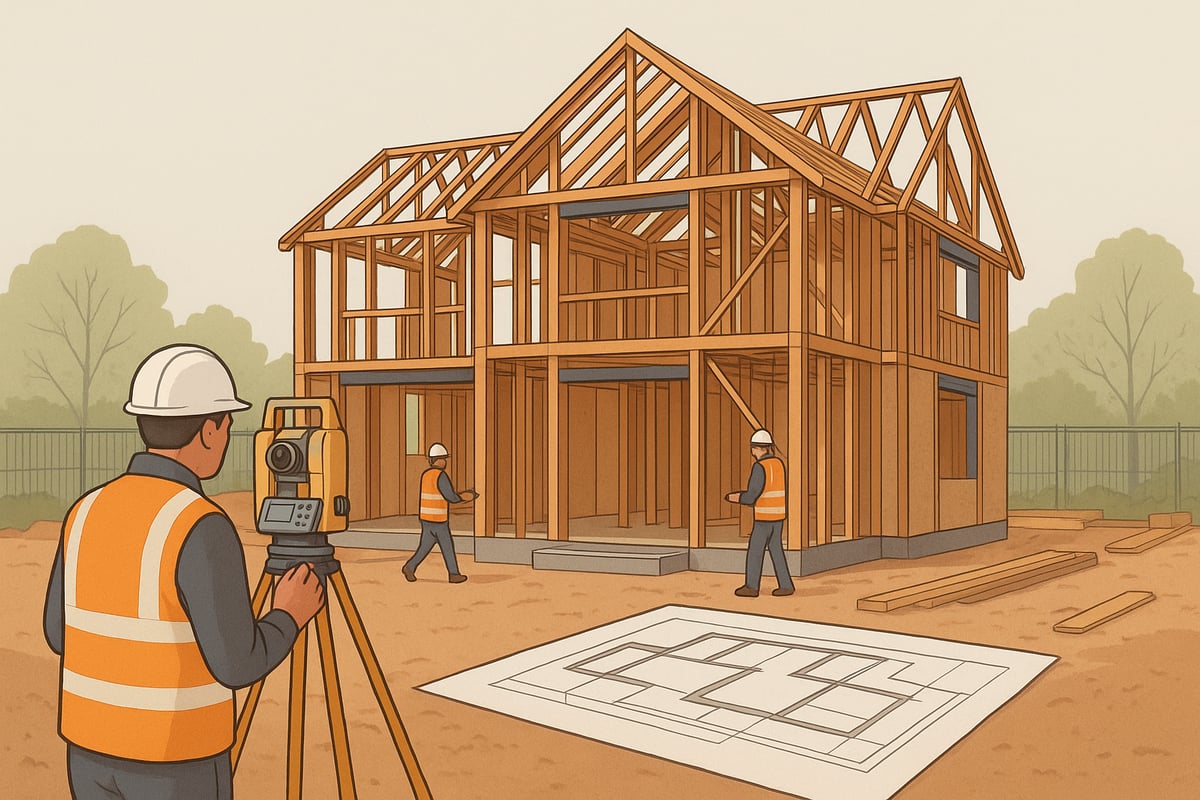
Step 1: Pre-Construction Preparation
The first step in building a timber frame hybrid house is thorough site analysis. Arrange for a detailed survey and soil tests to inform your foundation design. These assessments help identify potential risks and ensure your home’s stability.
Next, finalise your designs and secure all necessary permits. Order prefabricated timber components, allowing time for manufacturing and delivery. Efficient supply chain management is vital in 2025, as demand for sustainable builds continues to rise. For a deeper dive into these early decisions, consult the Timber Frame Construction Guide, which offers invaluable insights for self-builders.
Step 2: Groundworks and Foundations
Once the groundwork is set, excavation and foundation installation can commence. For a timber frame hybrid house, common options include strip, raft, or pile foundations, chosen based on soil conditions and structural requirements.
Compatibility with timber and hybrid materials is essential. Properly planned foundations ensure long-term durability and efficient energy performance. On average, expect this phase to take two to three weeks, with costs varying according to site complexity and materials used.
Step 3: Erecting the Timber Frame Structure
With the foundations complete, the prefabricated timber frame structure arrives onsite. Offsite manufacturing enables high precision and faster assembly. Crane lifts safely position large sections, and the frame is typically up within one to two weeks.
Sequencing is crucial, as each element must align with the hybrid design. The timber frame hybrid house benefits from this rapid progress, reducing the risk of weather delays and keeping your project on schedule.
Step 4: Integrating Hybrid Elements
Following the main frame, hybrid elements such as SIPs, steelwork, or masonry infill are installed. These components add strength, insulation, and design flexibility to your timber frame hybrid house.
Special attention is paid to junctions and connections, ensuring airtightness and moisture control. Wall build-ups are tailored to achieve excellent thermal performance, often exceeding current Building Regulations for energy efficiency.
Step 5: Weatherproofing and External Finishes
Once the hybrid structure is in place, the building envelope is sealed. Roof installation, windows, and doors are fitted to protect the interior from the elements. Cladding options range from timber to brick or render, each offering unique aesthetic and performance benefits.
Weather-tightness is checked at every stage, and timber is treated for longevity. These measures keep your timber frame hybrid house resilient and low-maintenance for years to come.
Step 6: Internal Fit-Out and Systems
Internal works begin with plumbing, electrics, and HVAC systems. High-performance insulation is added, followed by plastering, joinery, and flooring. Modern timber frame hybrid house designs often include smart home technology and renewable energy systems for optimal comfort and efficiency.
Coordination between trades ensures smooth progress and prevents costly delays. Each detail, from lighting to heating, is tailored to your lifestyle and sustainability goals.
Step 7: Final Checks and Handover
The final stage involves thorough quality checks. Building control officers inspect for compliance, and air tightness or thermal imaging tests are conducted to confirm performance targets are met. Any minor snags are addressed promptly.
A detailed client walkthrough ensures you are familiar with every feature of your timber frame hybrid house. Aftercare advice is provided, supporting you as you settle into your new, future-ready home.
Costs, Funding, and Value in 2025
Understanding the financial aspects of a timber frame hybrid house is crucial before breaking ground. Costs, funding, and long-term value are central to a successful project. Let us explore each aspect to help you make confident decisions.
Breaking Down the Costs of a Hybrid Timber Frame House
The cost of building a timber frame hybrid house in the UK in 2025 is shaped by materials, labour, and design complexity. On average, expect costs to range from £1,800 to £2,500 per square metre, depending on finishes and site conditions. These figures reflect both bespoke and modular approaches.
| Category | Typical Cost (£/m²) | Notes |
|---|---|---|
| Timber Frame | 500–800 | Frame, SIPs, steelwork |
| Foundations | 150–300 | Strip, raft, or pile |
| External Envelope | 400–600 | Windows, doors, cladding |
| Internal Fit-Out | 500–800 | Plumbing, electrics, finishes |
A timber frame hybrid house is often up to 30% faster to build and delivers energy savings of 20–40% compared to masonry alternatives. For more on these advantages, see the Timber Frame Construction Benefits. Accurate budgeting helps ensure your project stays on track.
Funding Options and Self-Build Mortgages
Securing funding for a timber frame hybrid house requires careful planning. Self-build mortgages are widely available in the UK, structured around stage payments. Lenders typically release funds after key milestones such as land purchase, foundation completion, and frame erection.
You may also be eligible for green home grants or incentives, especially if your timber frame hybrid house achieves high energy performance. To manage cash flow, keep detailed cost breakdowns and factor in contingencies for unexpected expenses.
Consider working with a financial adviser experienced in self-builds. They can help you navigate the mortgage process, ensuring your timber frame hybrid house project remains financially viable from start to finish.
Maximising Long-Term Value
A timber frame hybrid house offers more than short-term savings. High energy efficiency and low maintenance can reduce running costs and support strong resale values. Homes built to EPC A standards, with features like triple glazing and MVHR, are increasingly sought after in the green home market.
Case studies show that a timber frame hybrid house can command a resale premium, especially in areas where sustainable homes are in demand. Investing in quality materials and futureproofing your design further enhances long-term value.
Prioritise features that improve comfort and reduce energy bills. Over time, the savings and potential for higher resale value make a timber frame hybrid house a sound investment.
Avoiding Costly Pitfalls
To avoid costly mistakes when building a timber frame hybrid house, start with a realistic budget and stick to it. Common overspending traps include specification changes mid-project, underestimating groundworks, and failing to allow for professional fees.
Value engineering can help control costs without sacrificing quality. This means making smart choices about materials and details, focusing on what delivers the best performance for your budget. Engage experienced professionals early to spot risks and avoid delays.
Finally, maintain clear communication with your project team throughout. Staying organised and proactive ensures your timber frame hybrid house delivers on its promise of efficiency and value.
Timber Frame Hybrid House Trends and Innovations for 2025
The landscape for the timber frame hybrid house is evolving rapidly, with 2025 set to showcase bold new directions in design, construction, and sustainability. Homeowners and professionals alike are embracing these advances to futureproof homes, lower environmental impact, and create living spaces that adapt to changing needs.
Emerging Design and Construction Trends
In 2025, the timber frame hybrid house continues to push boundaries in both form and function. Modular and prefabricated systems are now mainstream, enabling faster assembly and reduced waste. These homes are designed for flexibility, with open-plan layouts that can be reconfigured for multi-generational living or remote workspaces.
Biophilic design is also gaining traction, integrating natural elements like timber beams, green roofs, and expansive glazing to strengthen the connection between indoors and outdoors. This approach not only enhances wellbeing but also supports energy efficiency.
Trends to watch:
- Modular and panelised hybrid construction
- Adaptable spaces for evolving family needs
- Integration of living walls, natural ventilation, and daylight strategies
These trends ensure the timber frame hybrid house remains at the forefront of modern, adaptable living.
Advances in Materials and Technology
Material innovation is central to the timber frame hybrid house revolution. The use of engineered timber products, such as cross-laminated timber (CLT) and glulam beams, delivers superior strength and design flexibility. Low-carbon concrete and recycled steel are increasingly used for hybrid connections and foundations, reducing the overall environmental footprint.
Smart technology is reshaping how these homes are built and operated. Robotics and digital fabrication streamline construction, increase precision, and minimise on-site disruption. The integration of IoT devices and automated building management systems enhances comfort, energy performance, and security. For a deeper look at these advances, see how Robotics and Timber in UK Housing are transforming the sector.
Through these innovations, the timber frame hybrid house is becoming smarter, safer, and more sustainable than ever.
Sustainability and Net Zero Targets
Sustainability is at the heart of every timber frame hybrid house built in 2025. Timber captures and stores carbon, helping to offset emissions from other building materials. Many hybrids now meet or exceed the Future Homes Standard, achieving excellent EPC ratings and ultra-low U-values.
Key sustainability features include:
- High-performance insulation and airtightness
- Renewable energy systems, such as solar PV and heat pumps
- Responsible sourcing of timber and recycled materials
Hybrid construction methods support the UK's net zero ambitions by reducing operational and embodied carbon. Homeowners can expect reduced energy bills and a smaller environmental footprint, making the timber frame hybrid house a leading choice for eco-conscious living.
The Future of Timber Frame Hybrid Living
Looking ahead, the timber frame hybrid house is poised for significant growth. Market demand is rising as more people seek homes that balance tradition and innovation. Regulations will continue to evolve, encouraging further adoption of low-carbon materials and smarter construction practices.
Personalisation is another key trend, with digital design tools enabling bespoke layouts, finishes, and features tailored to each homeowner's preferences. As the sector matures, expect even greater choice, value, and performance from every timber frame hybrid house.
This forward-thinking approach ensures these homes remain a wise investment for years to come.
As you’ve seen, building a timber frame hybrid house in 2025 is about blending timeless craftsmanship with modern innovation—ensuring your home is both sustainable and tailored to your lifestyle. If you’re inspired to take the next step, why not turn these insights into reality with a team that brings your vision to life and handles every detail, from design to final handover? With Acorn to Oak Framing’s expertise in bespoke timber frame solutions, you can start your smart, future ready build with confidence.
BUILD NOW
